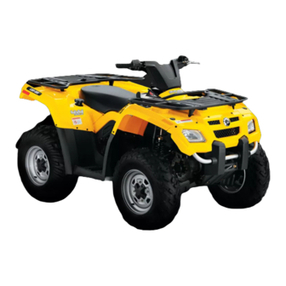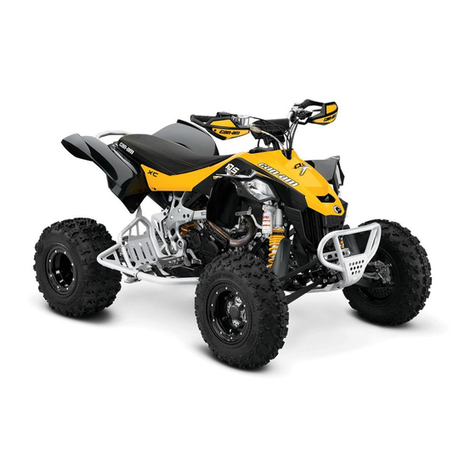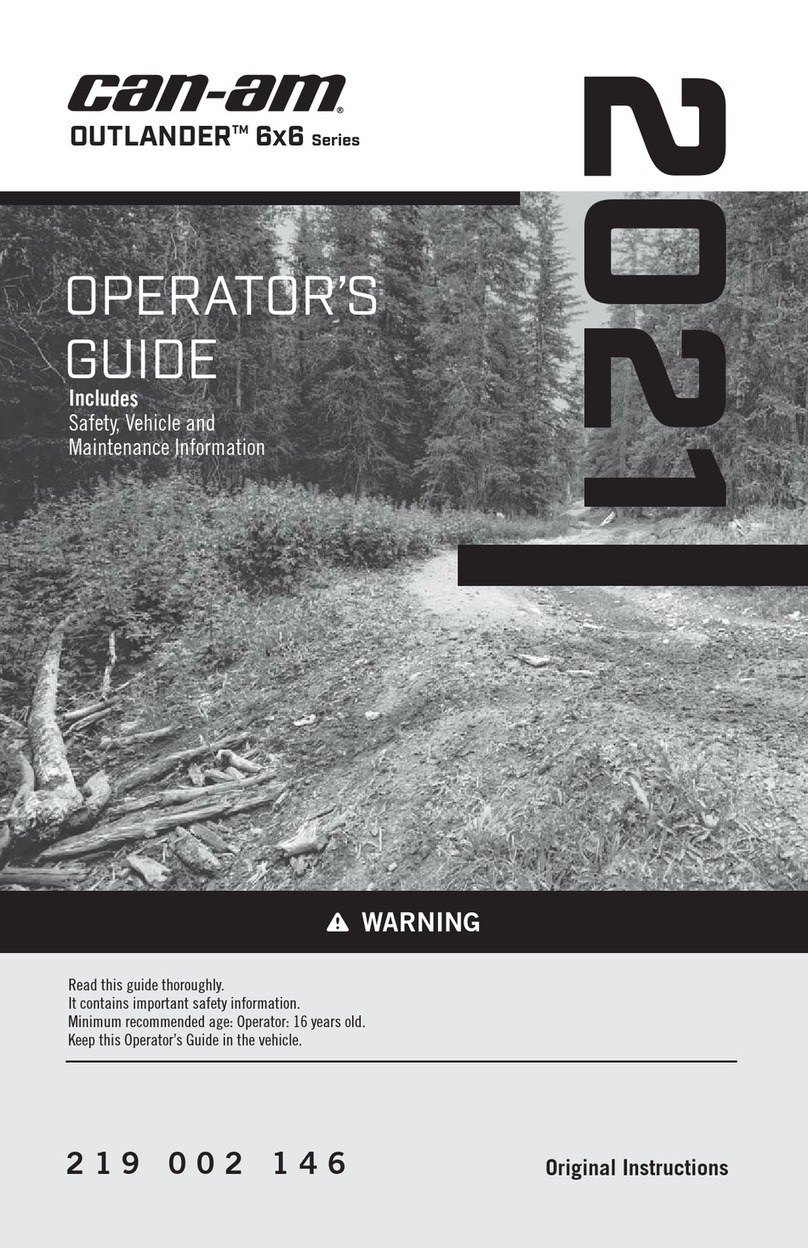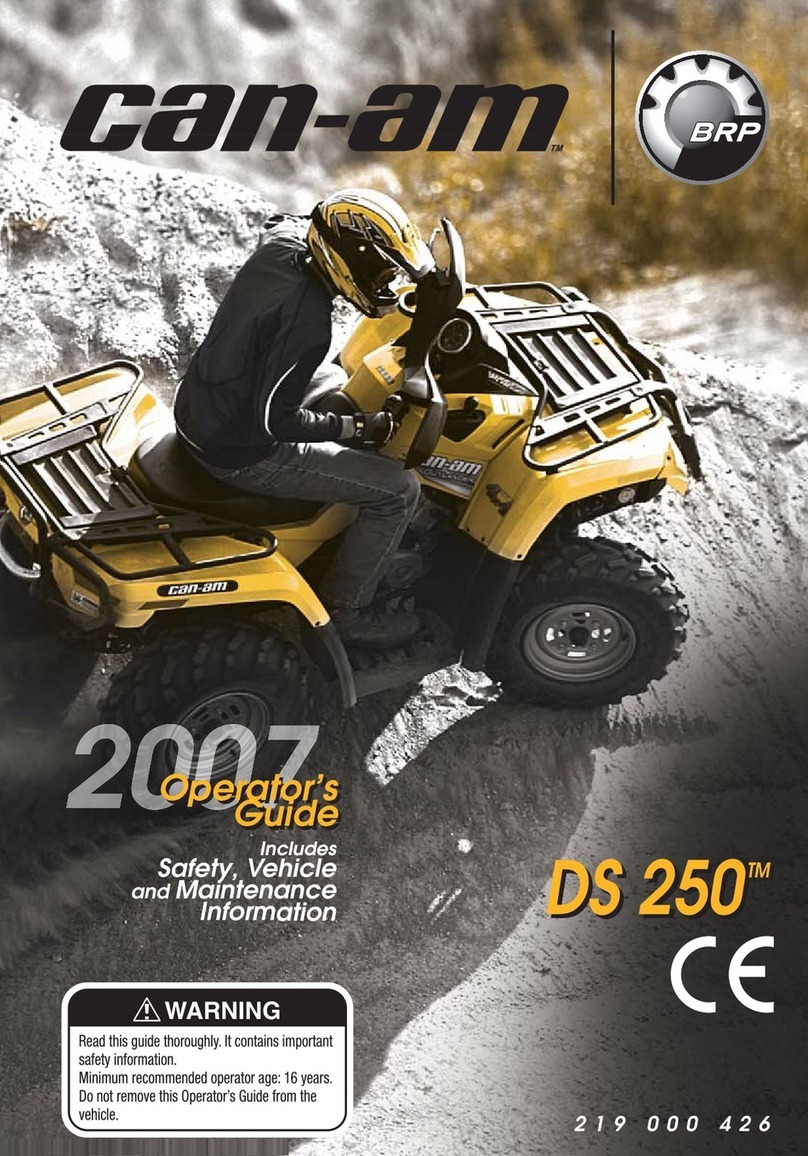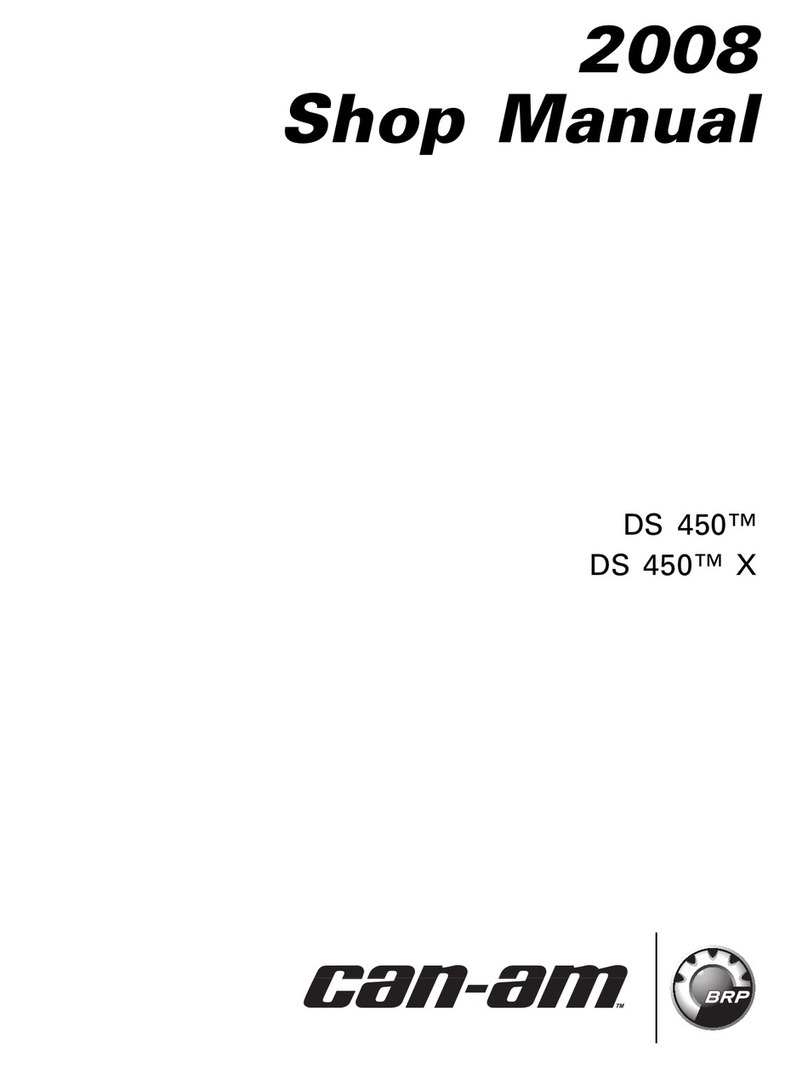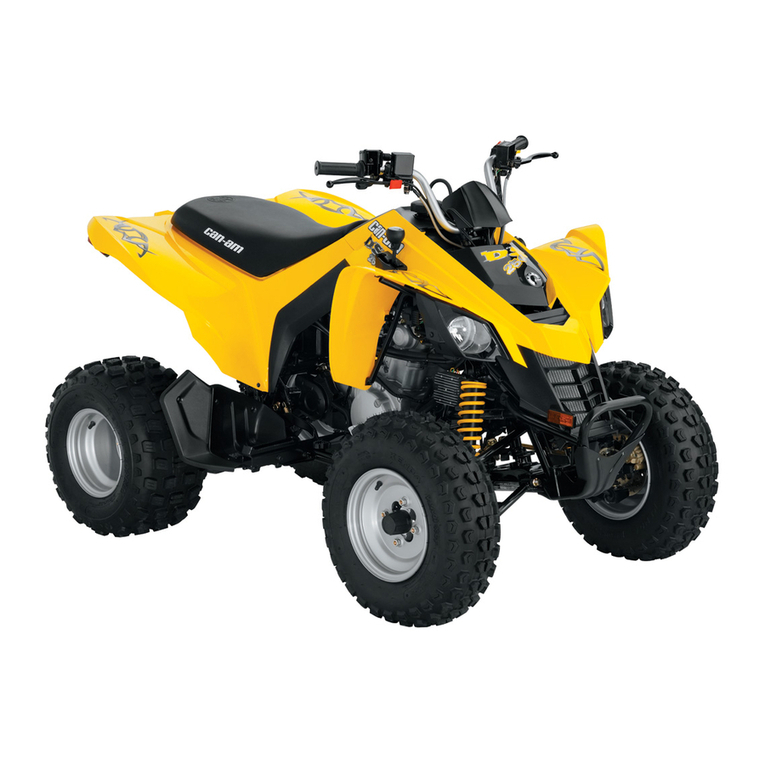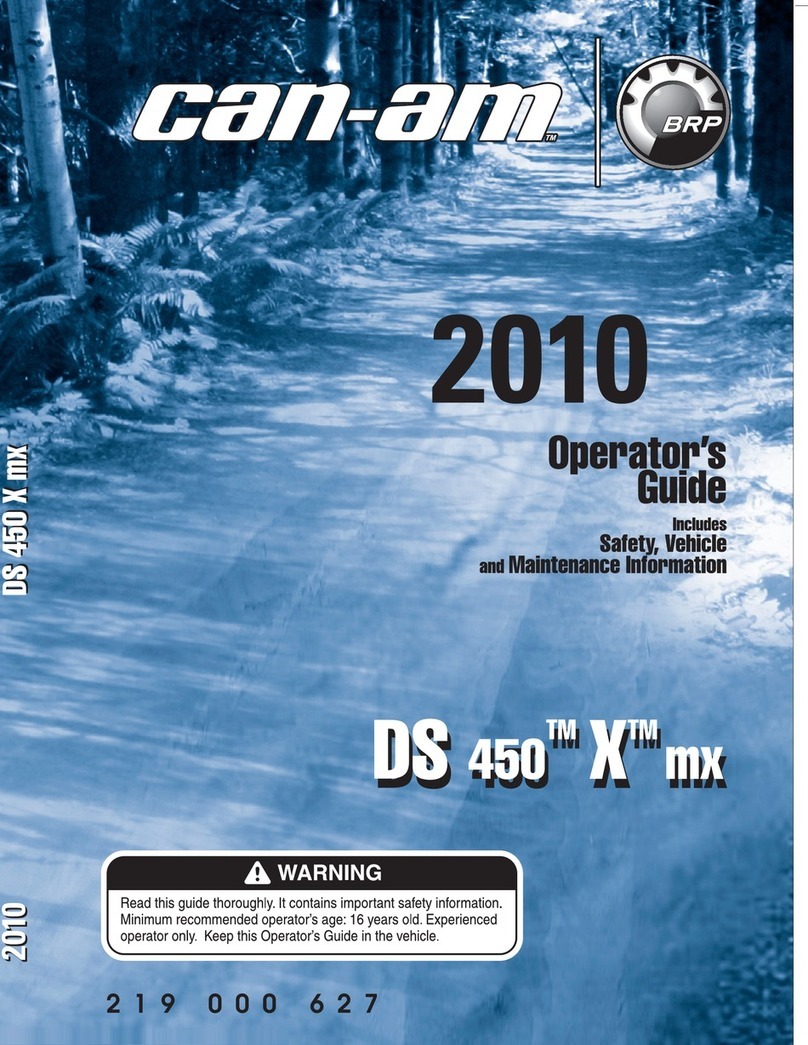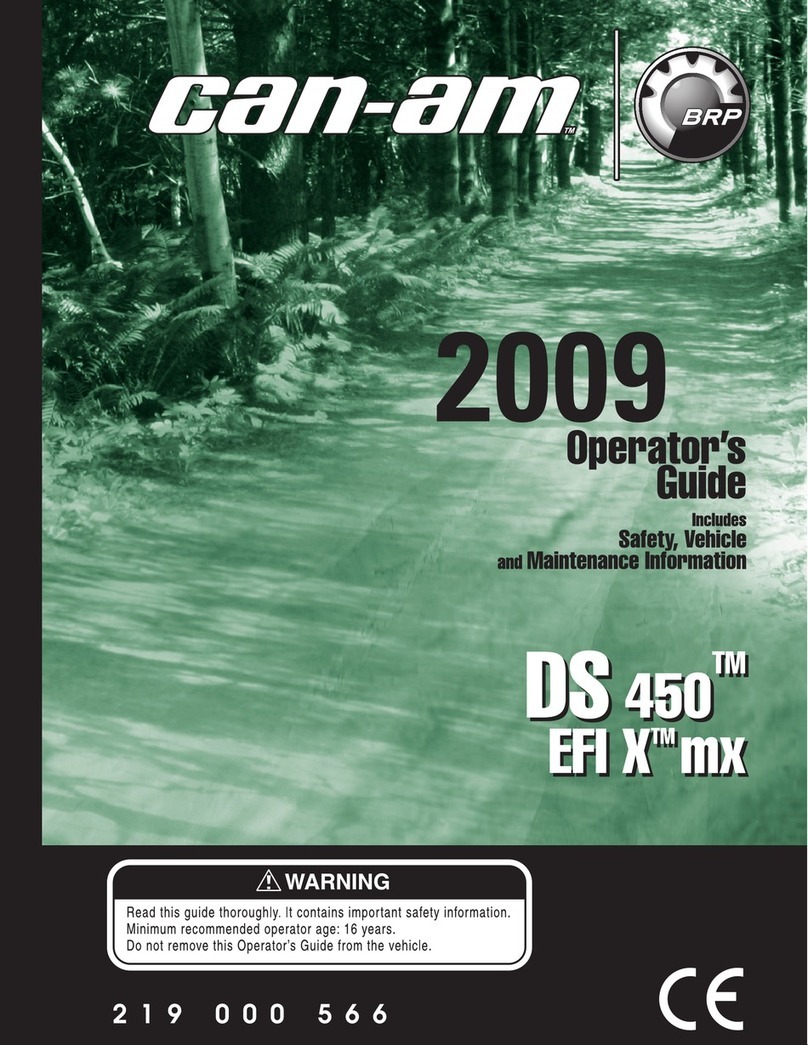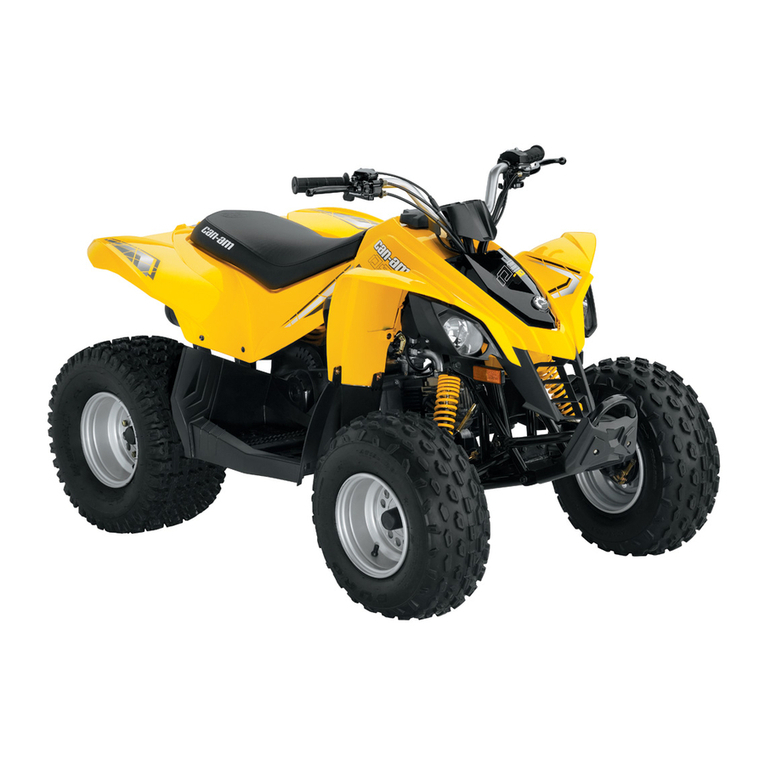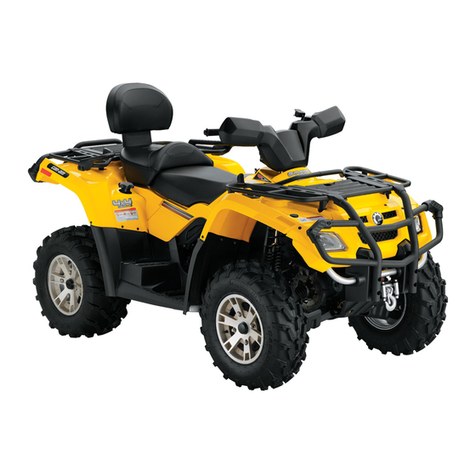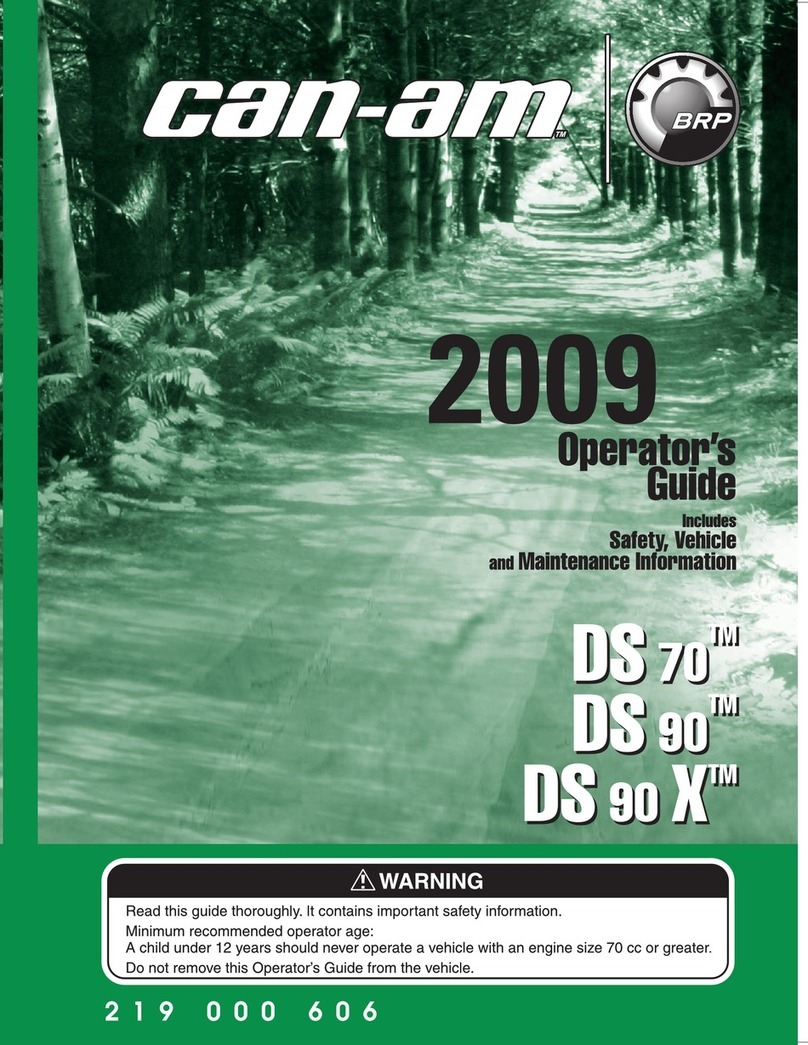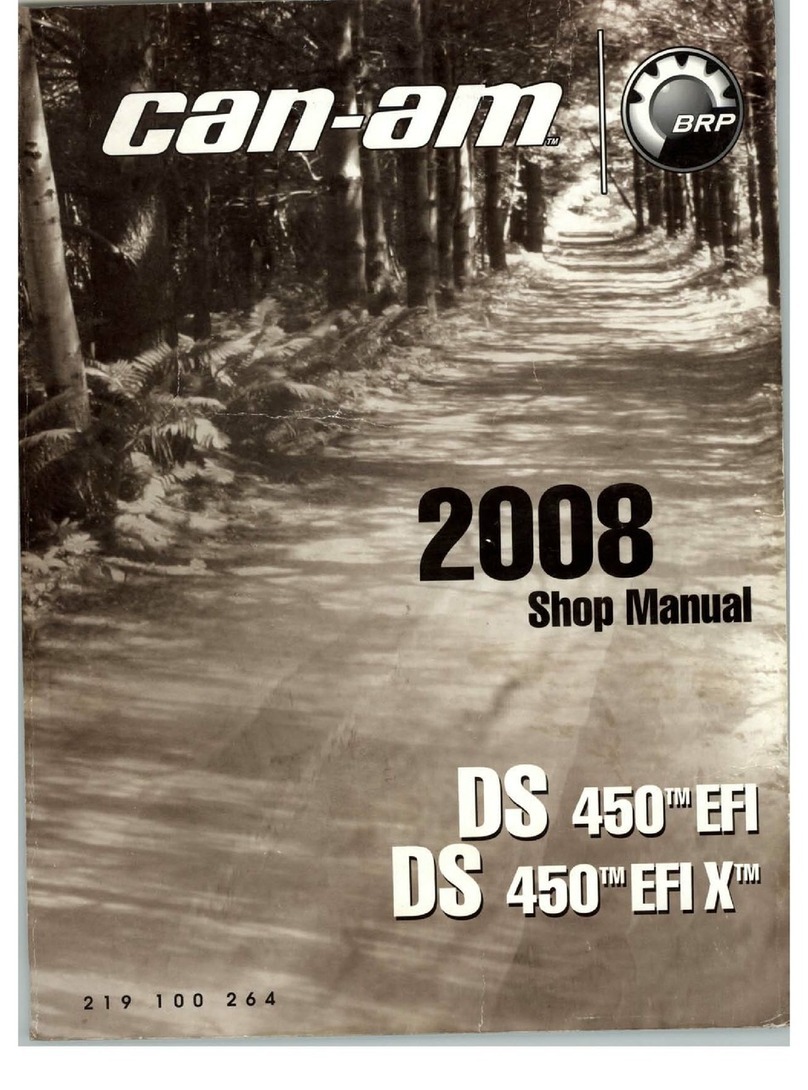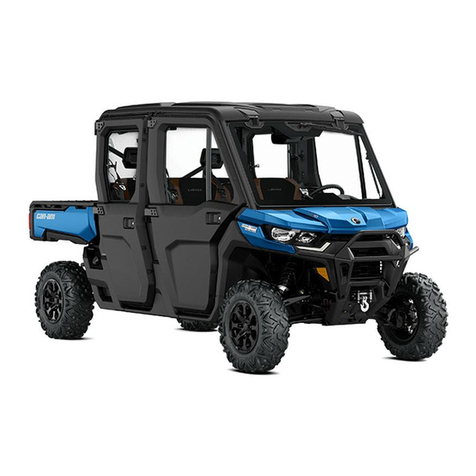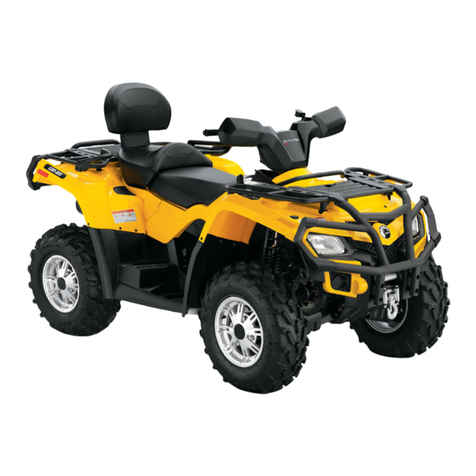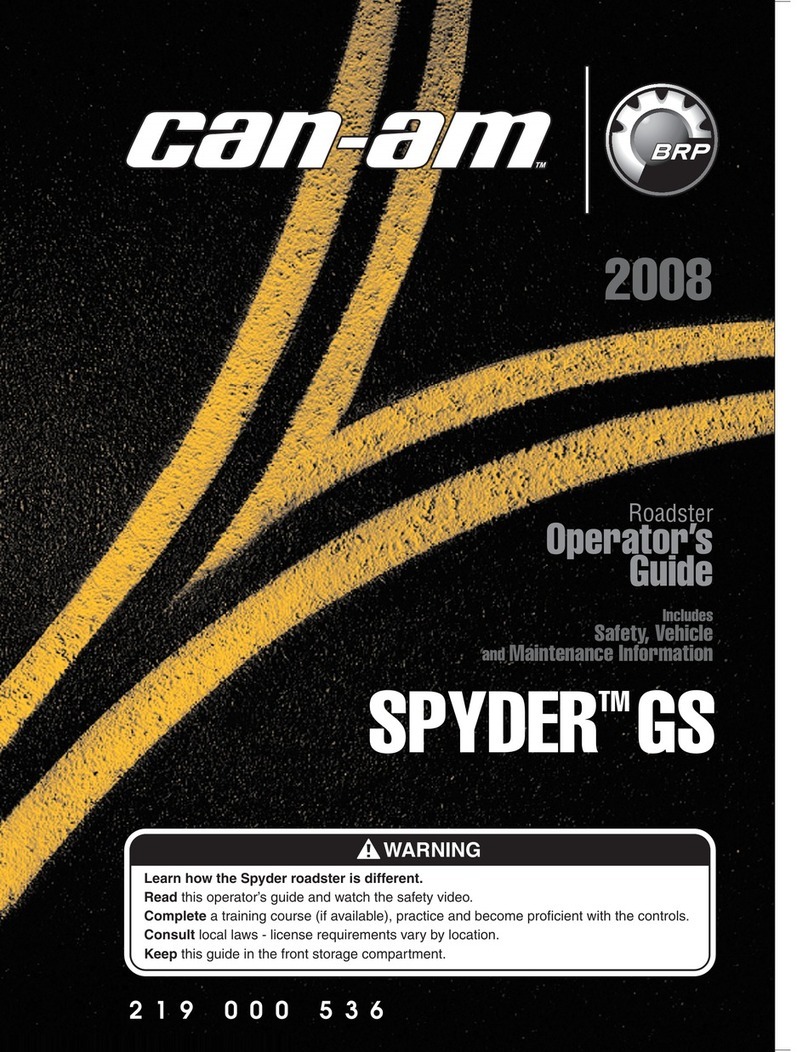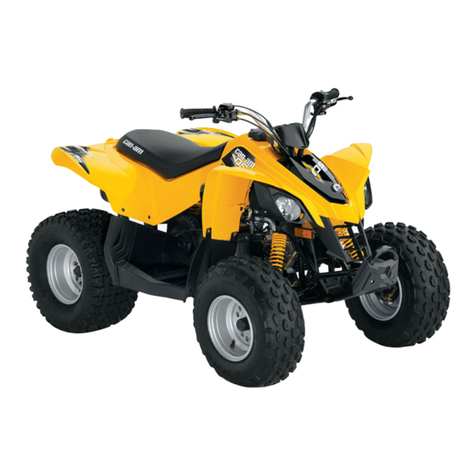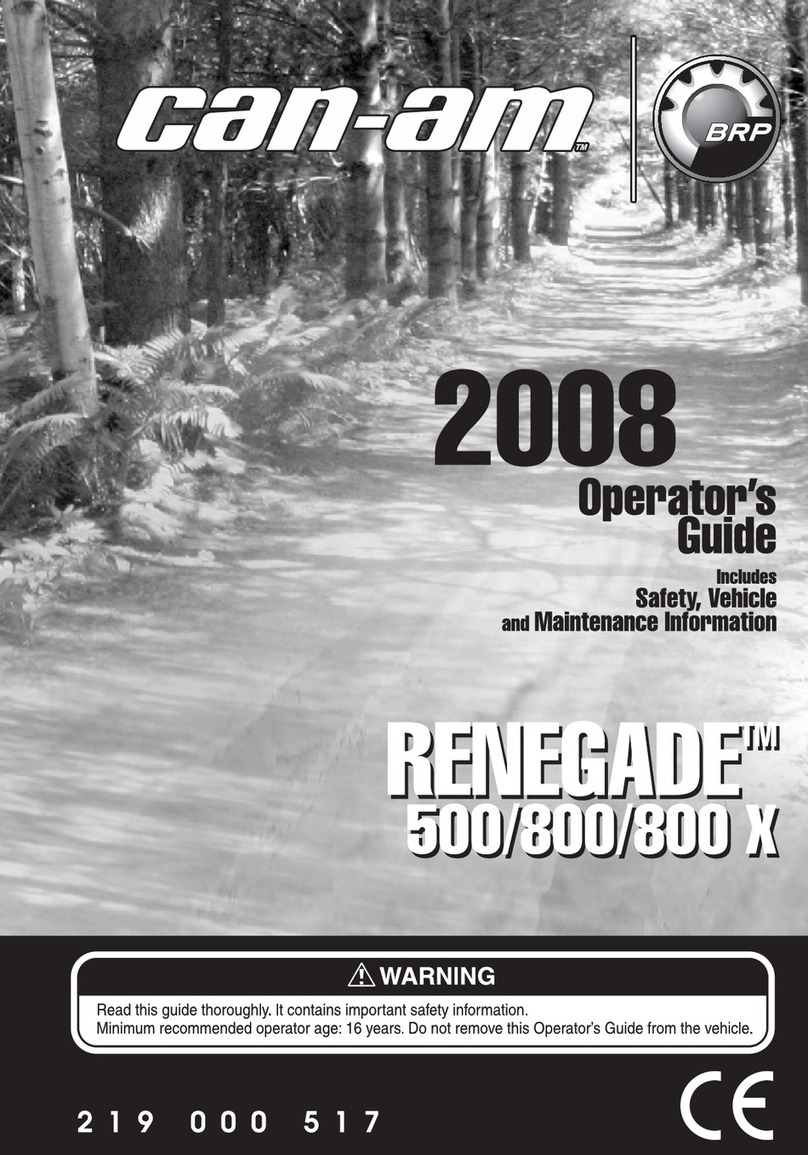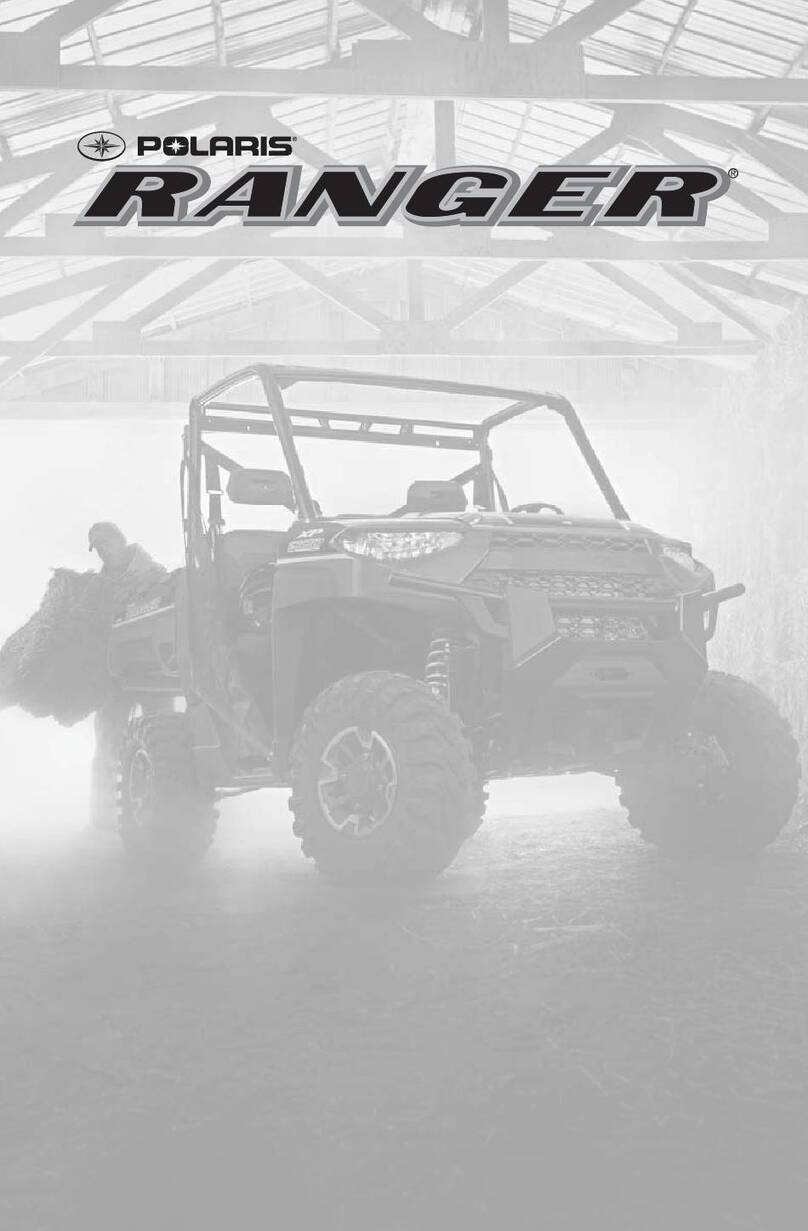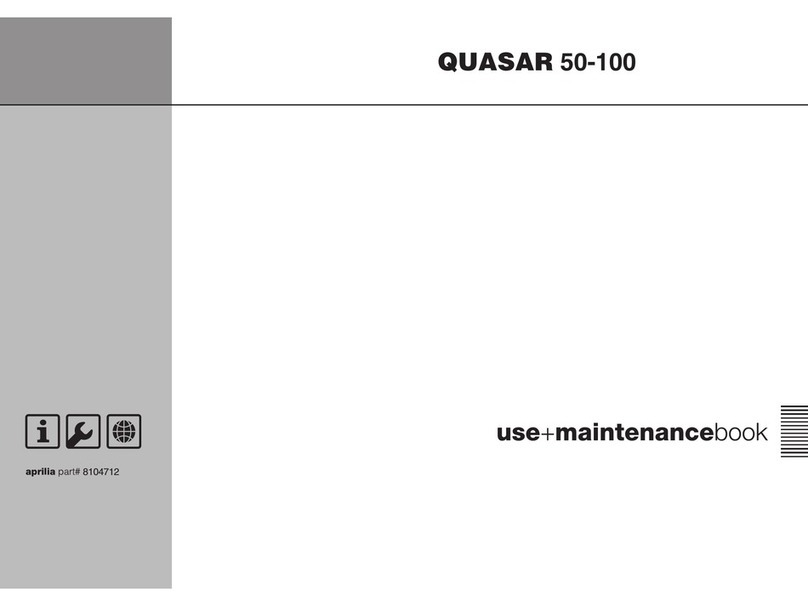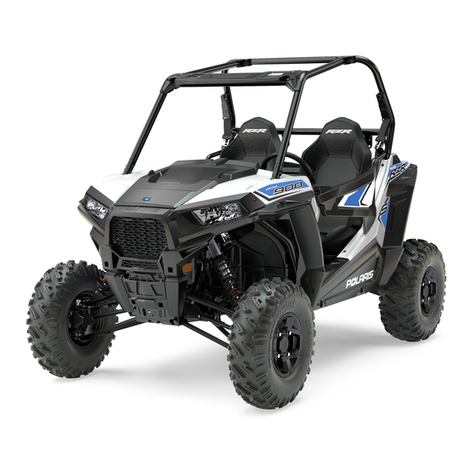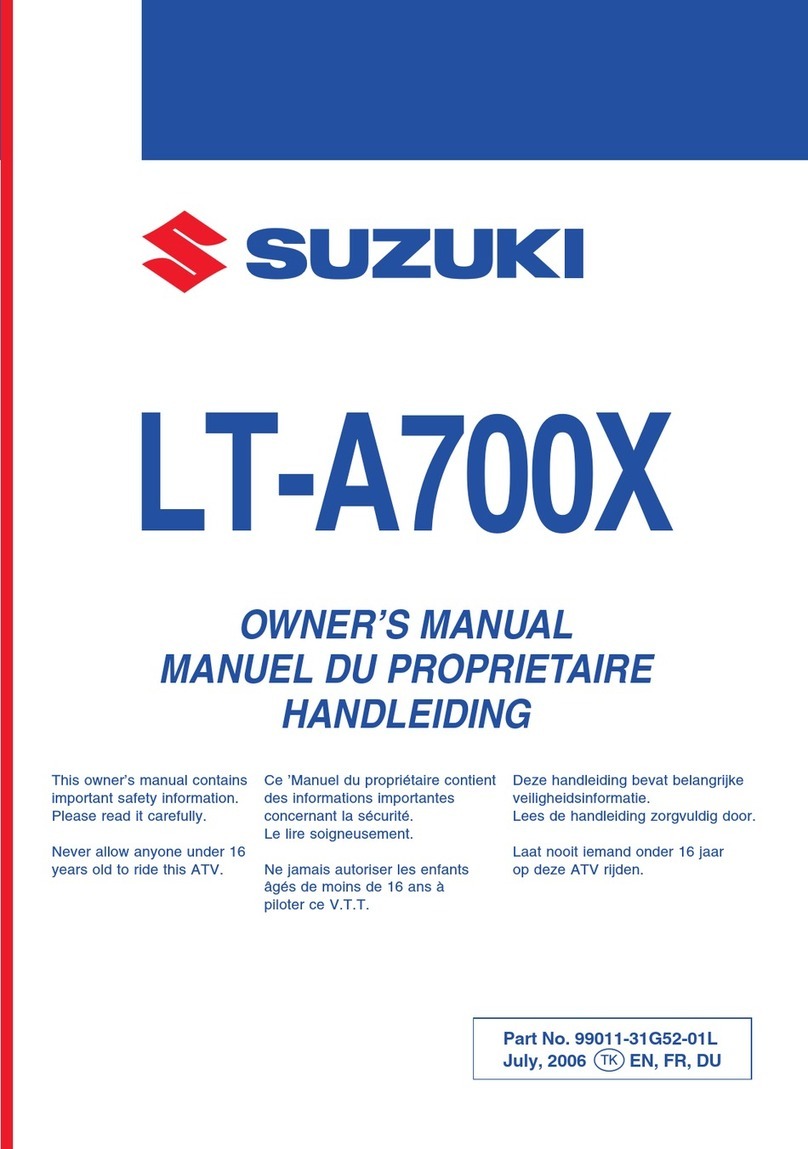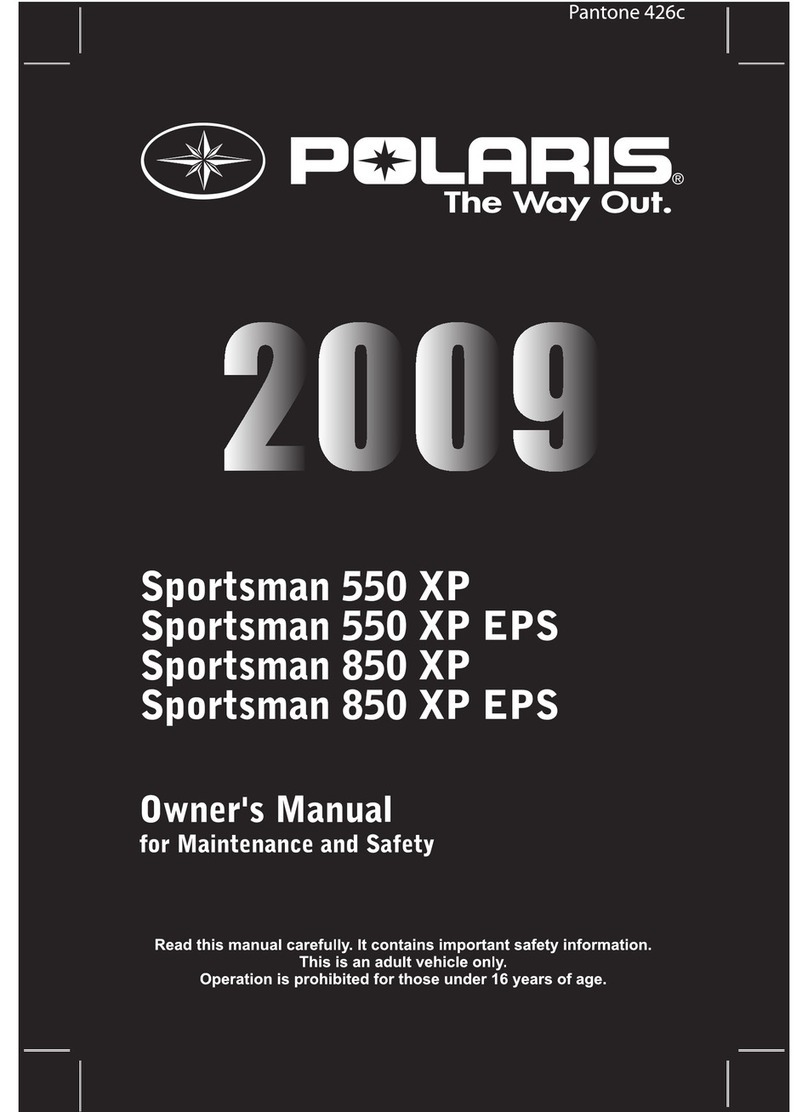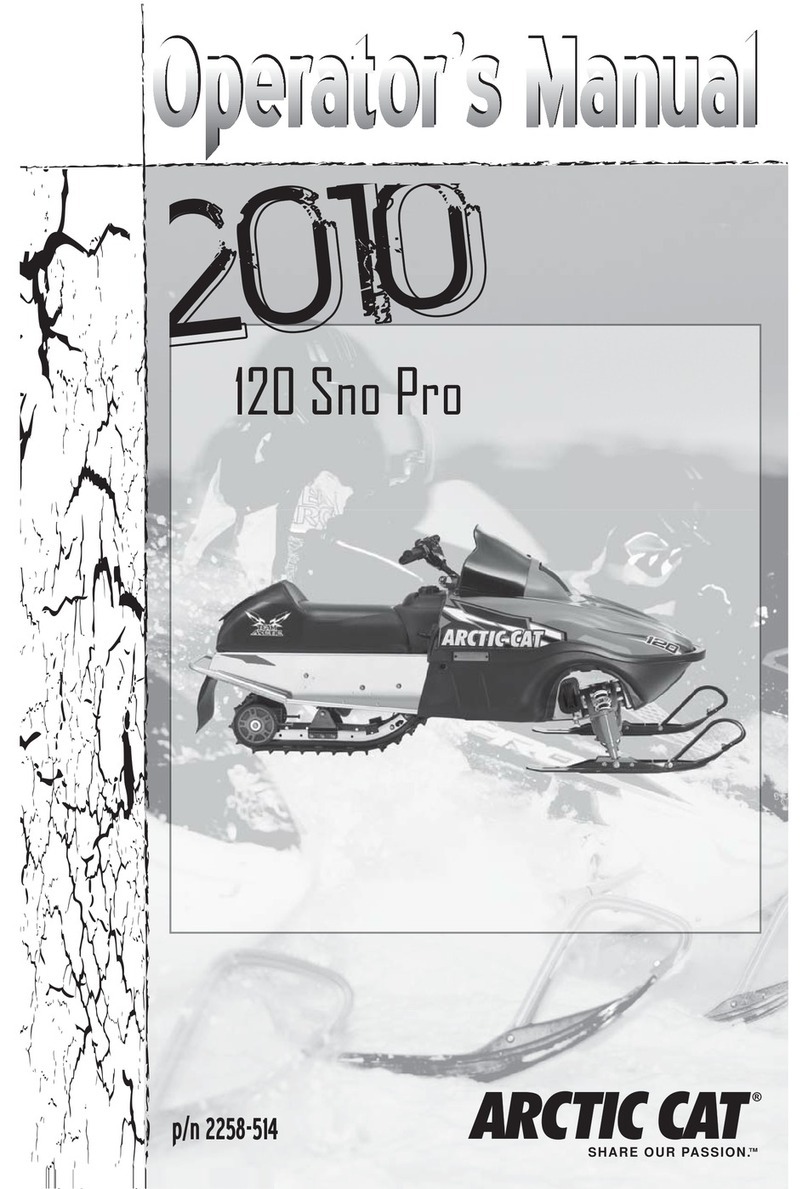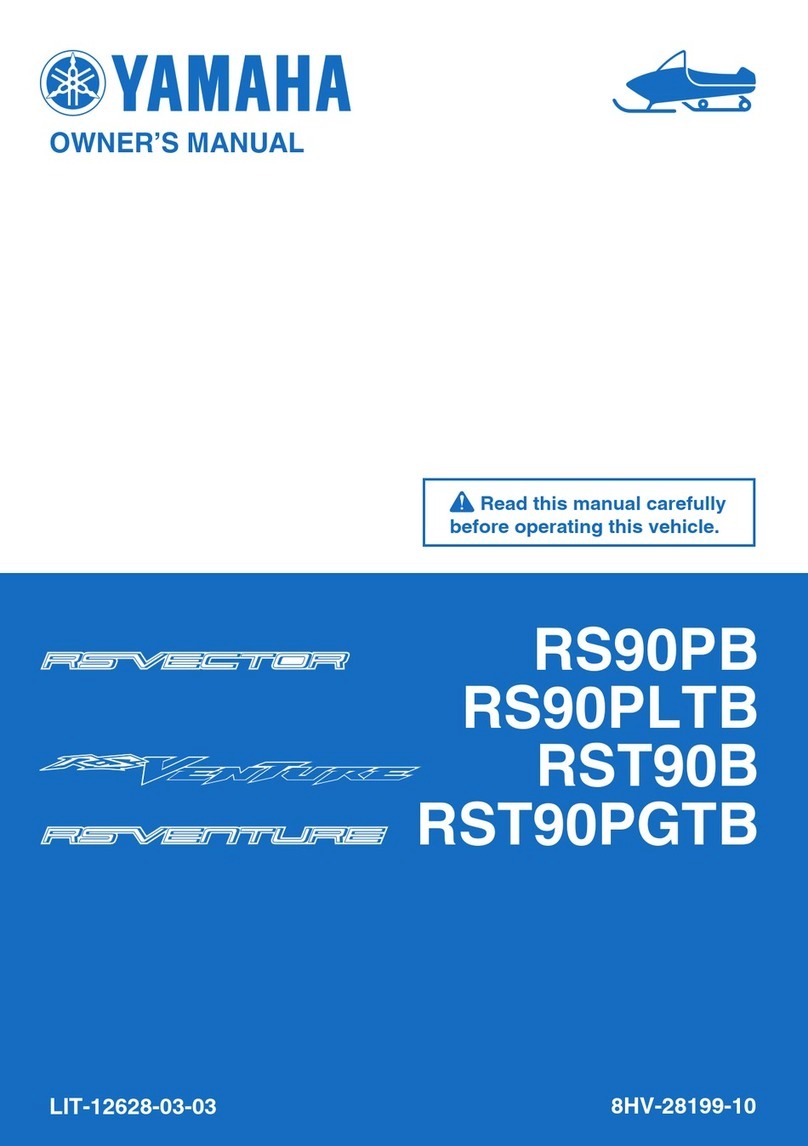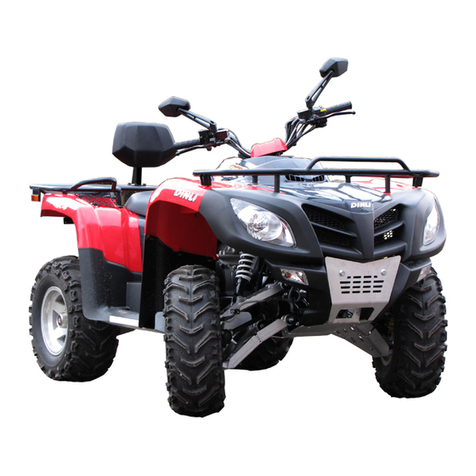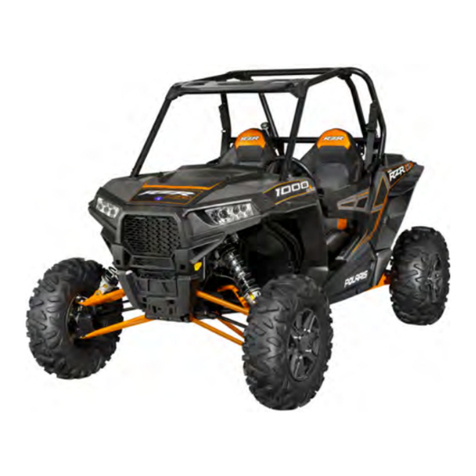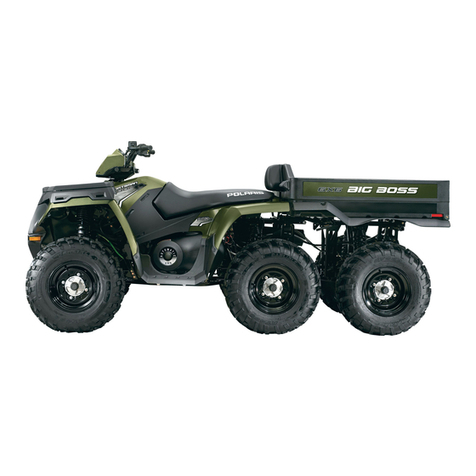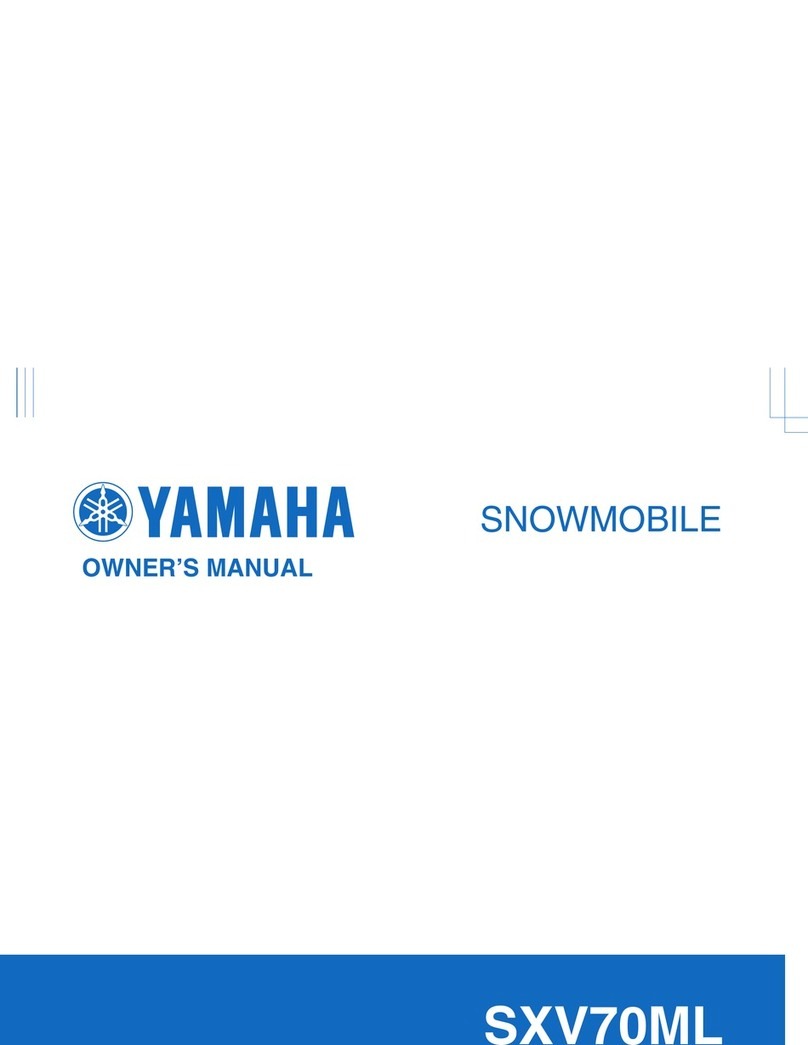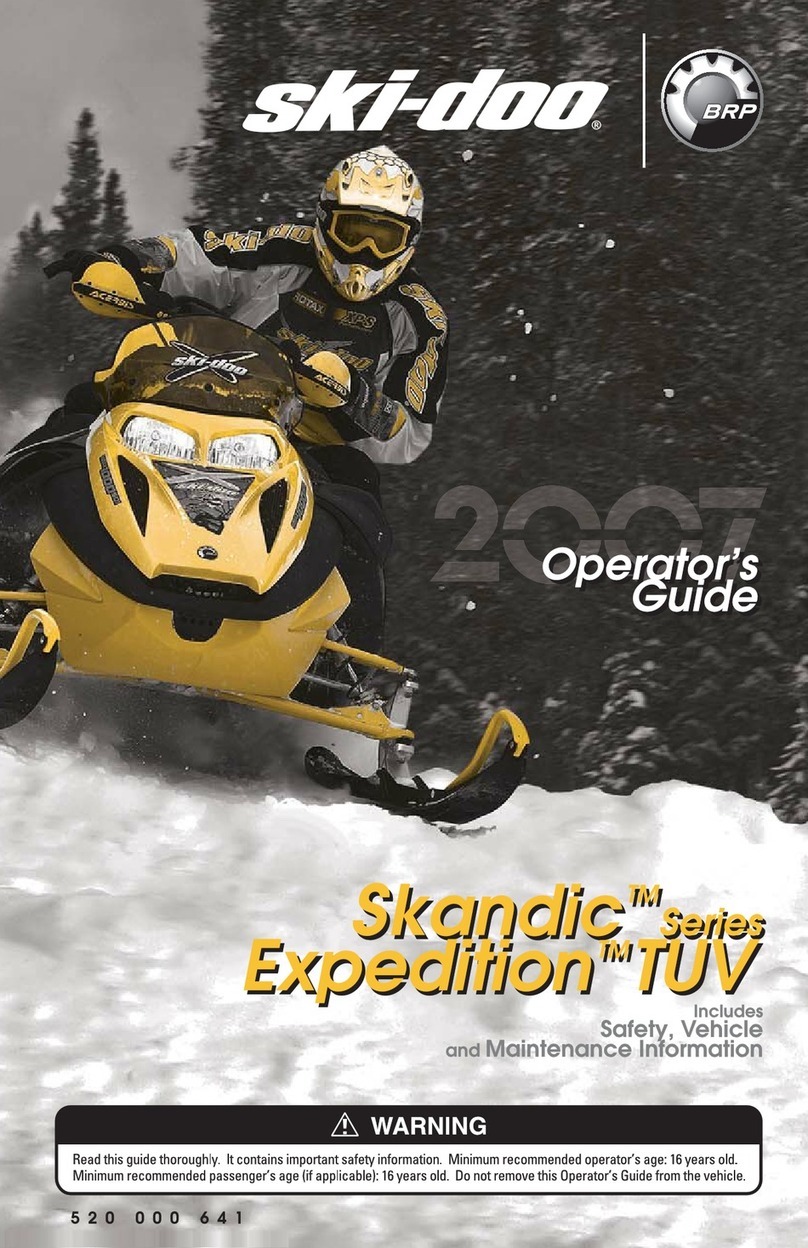
FOREWORD
Also, read all safety labels on your ve-
hicle and watch the
SAFETY VIDEO
located at https://can-am.brp.com/off-
road/safety.
Failure to follow the warnings con-
tained in this Operator's Guide can
result in SERIOUS INJURY or DEATH.
Safety Messages
The types of safety messages, what
they look like and how they are used in
this guide are explained as follows:
The safety alert symbol indicates a
potential injury hazard.
WARNING
Indicates a potential hazard which,
if not avoided, could result in seri-
ous injury or death.
CAUTION Indicates a haz-
ardous situation which, if not
avoided, could result in minor or
moderate injury.
NOTICE Indicates an instruction
which, if not followed, could result
in severely damaged vehicle com-
ponents or other property.
About this Operator's
Guide
This Operator's Guide has been pre-
pared to acquaint the owner/operator
of a new vehicle with the various ve-
hicle controls, maintenance and safe
operating instructions. It is indispens-
able for the proper use of the product.
Keep this Operator's Guide in the vehi-
cle as you can refer to it for things such
as maintenance, troubleshooting and
instructing others.
Note that this guide is available in sev-
eral languages. In the event of any dis-
crepancy, the English version shall pre-
vail.
If you want to view and/or print an
extra copy of your Operator's Guide,
simply visit the following website
www.operatorsguides.brp.com.
The information contained in this doc-
ument is correct at the time of publi-
cation. BRP, however, maintains a pol-
icy of continuous improvement of its
products without imposing upon itself
any obligation to install them on prod-
ucts previously manufactured. Due
to late changes, some differences be-
tween the manufactured product and
the descriptions and/or specifications
in this guide may occur. BRP reserves
the right at any time to discontinue or
change specifications, designs, fea-
tures, models or equipment without
incurring any obligation upon itself.
This Operator's Guide should remain
with the vehicle when it is sold.
_______________ 3
